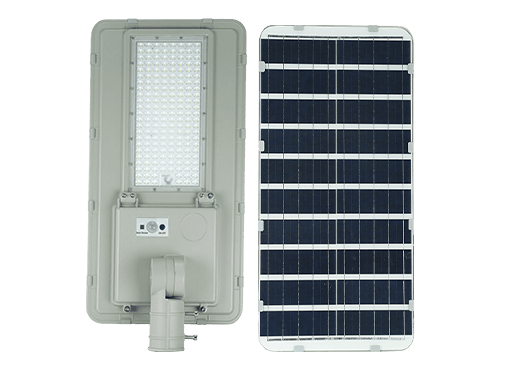
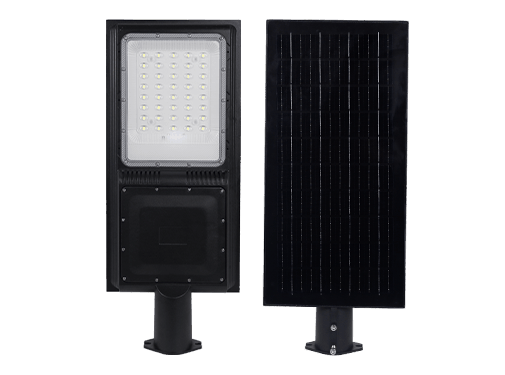
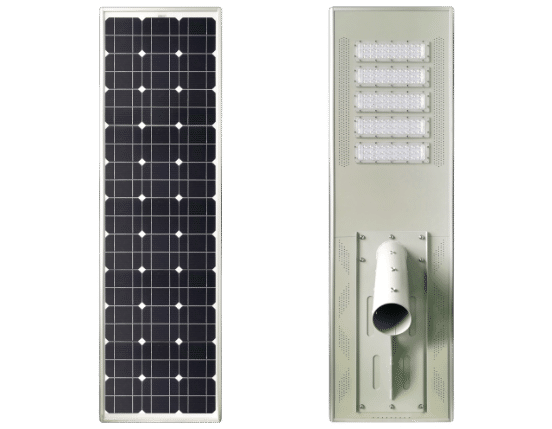
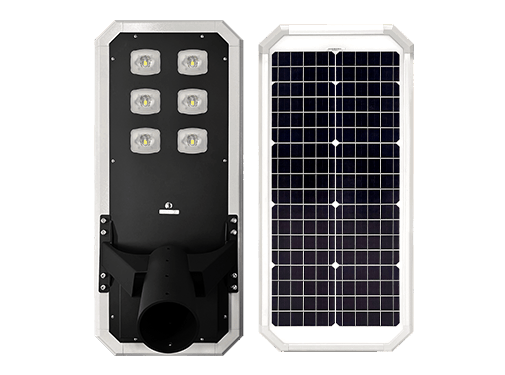
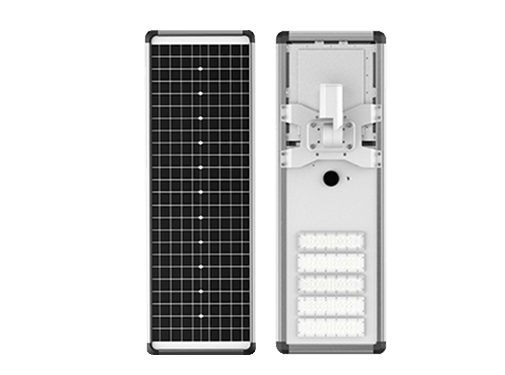
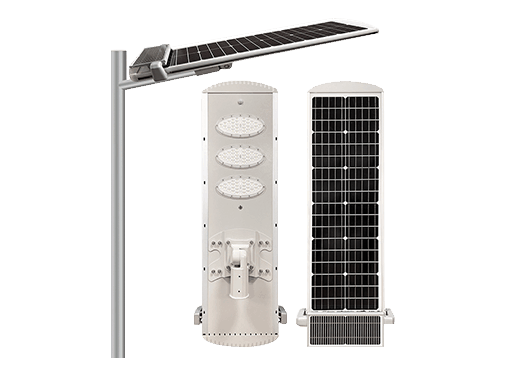
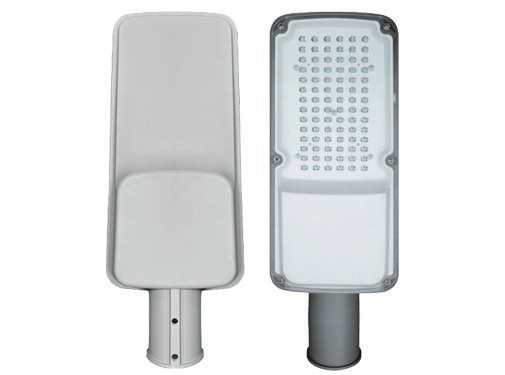
.png)
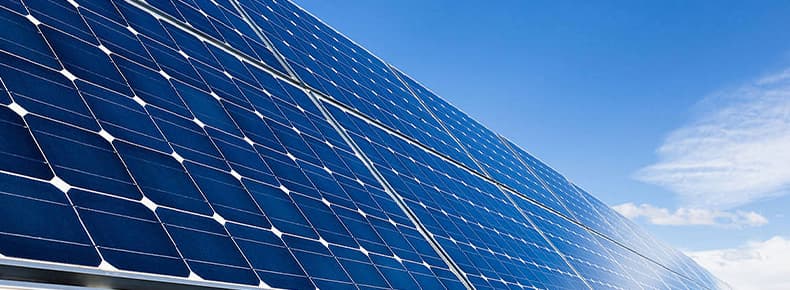
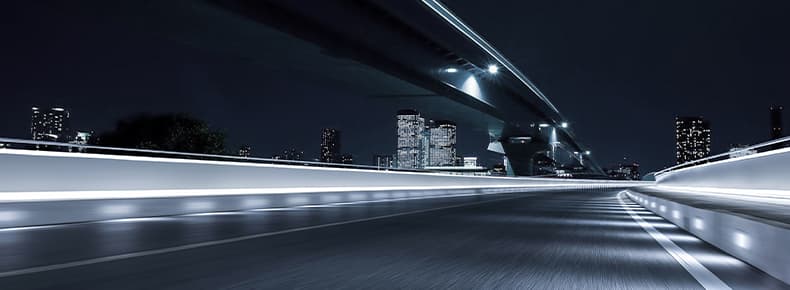

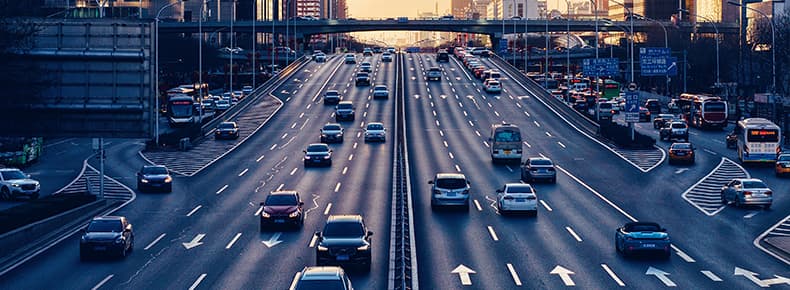
Commercial solar streetlights operate independently of the main power grid, a feature that allows them to continue to shine even when the grid is down. Whether it is a public area in the city, or a military facility, or a business park, stable lighting is essential to ensure safety. For example, in the city suffered a large-scale power outage, solar street lights for pedestrians and vehicles to provide the necessary lighting to reduce the occurrence of accidents; in the military base, even if the external power grid failure, solar street lamps can ensure that the base of the security monitoring is not affected.
Compared with traditional streetlights, commercial solar streetlights have significant advantages in terms of cost. The installation of traditional streetlights requires digging trenches and laying underground wires to connect to the power grid, a costly process. Solar streetlights are autonomous and off-grid, greatly reducing the total cost of installation. In addition, solar streetlights utilize solar energy directly, eliminating the need to pay electricity bills to the utility company and saving a lot of money in the long run.
Conventional streetlights emit carbon dioxide, exacerbating the accumulation of greenhouse gases in the atmosphere. Commercial solar streetlights, on the other hand, help to significantly reduce these harmful pollutants, contributing significantly to environmental protection. Noggin's specially designed fixtures not only reduce commercial light pollution, but also meet darkness-friendly standards to protect the natural environment of the night sky.
While traditional lighting fixtures need to be replaced about every five years, Noggin's durable solar lighting system is much more long-lasting. Apart from occasional cleaning of the solar panels and replacement of batteries, solar lighting systems require little other maintenance, which greatly reduces long-term maintenance costs.
Intelligent solar street lights are highly effective in reducing carbon dioxide emissions. By utilizing solar energy, they help meet renewable energy targets and reduce dependence on fossil fuels. Cities like San Diego and Bangalore have seen a significant drop in energy consumption and carbon footprint after adopting smart solar street lights. According to environmental expert Dr. Laura Green, “Solar streetlights are a transformative force in urban sustainability.”
While reducing emissions, these streetlights also help reduce light pollution and preserve the natural night sky landscape. This is essential for protecting wildlife and maintaining ecosystem health. Many nocturnal animals rely on the natural darkness for activities such as foraging and breeding, and excessive light pollution can interfere with their habits.
Intelligent solar street light can automatically adjust the brightness according to the ambient light conditions, thus realizing energy saving. This feature not only reduces energy consumption, but also extends the service life of the lighting system. In this way, the solar street light provides a practical solution for the sustainable development planning of the city and contributes to the creation of a cleaner and greener future.
Intelligent solar streetlights are equipped with intelligent management control functions with connectivity and remote access. City planners can monitor and control the streetlights from a central location, adjusting settings as needed to optimize performance. For example, streetlight brightness can be lowered to save energy late at night when vehicles and pedestrians are scarce, or remotely enhanced for special events or emergencies.
Dimming control : Street lights can adjust the light intensity according to different times of the day or traffic flow, which saves energy and extends the life of the lamps. For example, it provides sufficient lighting during peak traffic hours and automatically reduces the brightness late at night, realizing precise energy saving.
Video surveillance : solar street lights with cameras can provide real-time video surveillance of public spaces, effectively improving security. In some parks, squares and other public places, this function can help the police find and deal with abnormal situations in time.
Real-time data collection : Solar streetlights can collect and analyze data on traffic, weather and lighting conditions to provide a basis for urban decision-making. For example, by analyzing traffic data, city planners can optimize the time settings of traffic signals and improve traffic efficiency.
Commercial solar streetlights are installed along roads and highways to provide safety for nighttime driving and pedestrian travel and reduce accident rates. They are specially designed to withstand bad weather and provide adequate lighting even in remote areas without power infrastructure. For example, in some mountainous highways, the installation of solar-powered street lights has greatly improved nighttime driving conditions.
Large commercial parking lots use solar streetlights to enhance security and visibility at night. Bright lighting helps deter theft and vandalism while providing essential light for vehicles and pedestrians. Whether it's a shopping center parking lot or an office building parking lot, solar streetlights can play an important role.
The installation of solar streetlights in parks, playgrounds, and recreational areas extends the use of these spaces into the night. Streetlights improve the safety of visitors and also enhance the aesthetics of the environment. In some city parks, solar streetlights create a warm and pleasant nighttime atmosphere, attracting more people to come and relax.
The use of solar streetlights in industrial zones and industrial parks can maintain continuous lighting without relying on the main power grid, ensuring safe operations around the clock. For some factories that require continuous production, the stable illumination of solar streetlights provides a guarantee for workers' night work.
Universities, colleges and school campuses use solar streetlights to safeguard students and staff after dark. Streetlights facilitate movement between buildings and facilities and create a safe campus environment. Solar streetlights provide essential lighting support during nighttime activities on university campuses.
Solar streetlights provide aesthetically pleasing and functional lighting for public squares, outdoor shopping areas and sidewalks. They create a safe and pleasant environment for pedestrians while promoting nighttime commercial activities. In the public squares of some historical and cultural neighborhoods, solar streetlights illuminate the road while complementing the surrounding environment.
The service life of solar street light is affected by many factors, including component quality, maintenance and environmental conditions. Generally speaking, the service life of a well-designed and properly maintained solar street light can reach 10 to 20 years.
Regular maintenance and inspection is essential to ensure the long-term stable operation of solar street lights. This includes cleaning the solar panels to ensure that they are adequately absorbing sunlight; inspecting and replacing faulty components; and monitoring the health of the batteries. By following recommended maintenance practices and using high-quality components, you can maximize the life of your solar street light. Although the individual components of a solar street light have different lifespans, they can be replaced individually as needed to achieve cost-effective maintenance and extend the life of the entire system.
When installing the foundation of solar street light, choose a horizontal and flat ground without tilting. Use four screws to fix the base cage on the ground, and one side of the base cage should be parallel to the edge of the road. Then fix the foundation cage with concrete, which will serve as the foundation of the street light.
Place the batteries in the ground next to the foundation cage at a depth of about 600 mm. Connect the batteries according to the circuit diagram to ensure correct connection.
Congratulations! You have successfully installed your solar street light. Be sure to follow the instructions and safety guidelines during the installation process to ensure that the installation is completed successfully.
NOKIN customizes each solar lighting system to ensure that it meets the optimal requirements of the local environment, temperature and hours of sunlight. Whether it's a cold northern region or a sunny southern city, NOKIN can provide a customized solution.
The Noggin team is committed to customer satisfaction and provides attentive service every step of the way when installing solar LED lights. They make the installation process easy and smooth, and provide professional support from pre-consultation to post-maintenance.
Noggin's team of experts has over 30 years of combined experience in developing outdoor solar lighting solutions. Engineers not only handle all the technical work, but also help clients choose the best design for their projects. Whether it is a complex urban lighting project or a simple community streetlight installation, they can provide expert advice.
Commercial solar street lights show many advantages in terms of safety, cost-effectiveness, sustainability and ease of maintenance. Their application scenarios are wide-ranging, covering roads, parking lots, parks and many other areas. Although the service life of solar street lights is affected by many factors, it can be effectively extended through reasonable maintenance.
Although there are certain steps in the installation process, it can be completed smoothly by following the guidelines. And NOKIN stands out in the solar street light field with customized services, excellent customer support, deep industry experience and flexible financing options.
Whether a city planner is moving forward with a large-scale municipal lighting project or a commercial real estate developer is looking for a lighting solution for parking lots and parks, commercial solar streetlights are an option worth considering. As technology continues to advance, solar street lights are expected to further change the lighting landscape of cities and villages in the future, contributing to a better world.